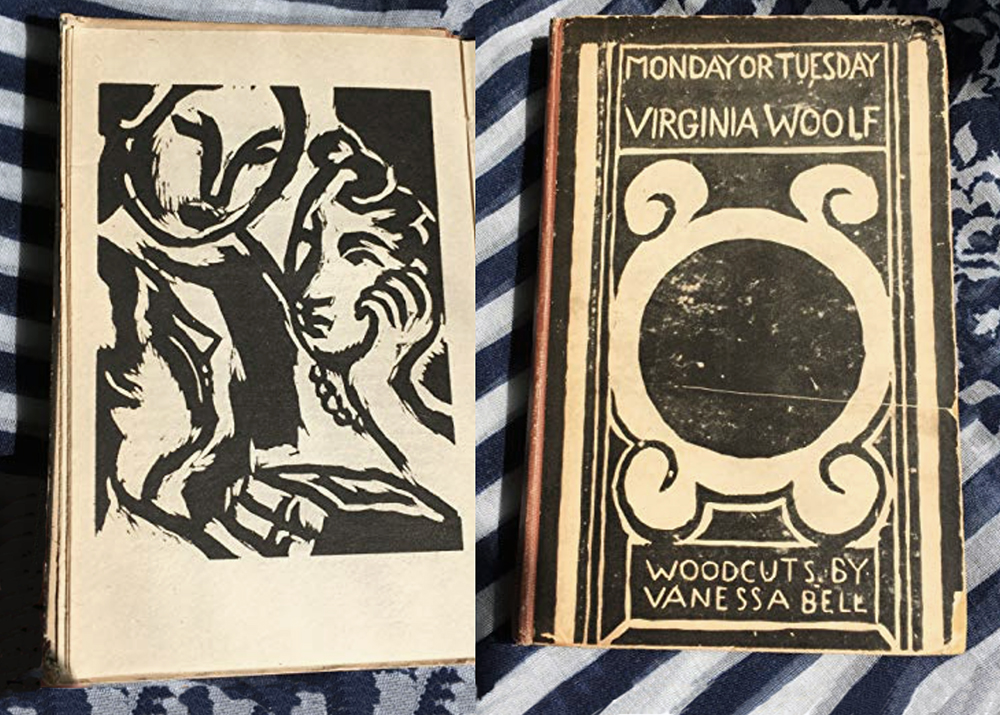Virginia & Leonard Woolf. Enterprising publishers.
running a creative enterprise

The Harvest: via the british library
Virginia Woolf was an English writer, considered one of the most important modernist 20th-century authors and also a pioneer in the use of stream of consciousness as a narrative device. Leonard Woolf was a man of letters, politics, essayist and an internationalist who influenced literary and political life through his ideas.
The Woolfs founded their own publishing house, and their discerning understanding encouraged such writers as T.S. Eliot and E.M. Forster.
For the sum of £19 5s 5d the Woolfs became owners of a small hand-printing press, some Old Face type and all the other necessary paraphernalia to begin their printing endeavour.
The printing press was duly installed on the dining room table at their home Hogarth House, which gave the Press its name.
There were a number of reasons why the Woolfs were keen to start printing. In his autobiography, Leonard stated that he wanted a distraction for Virginia to give her a break from the intellectual effort of writing. […]
Despite both Leonard and Virginia’s enthusiasm for printing, the Hogarth Press was only ever meant to be a hobby; it was not intended to grow into a full-time publishing enterprise.
In her late teens Virginia had developed an interest in bookbinding taking formal instruction in 1901. Although bookbinding was only a pastime, Virginia had taken it seriously and was proud of the results and the skills she’d acquired which would benefit their new press.
The Woolfs decided that the Hogarth Press would concentrate on small and experimental publications likely to be of no interest to commercial publishers. Owning their own press would give them the freedom to publish whatever they liked.
Virginia’s first novel The Voyage Out had been published in 1915 by Duckworth’s, the publishing company of her half-brother Gerald Duckworth. Virginia’s second novel Night and Day (1919) was also committed to Duckworth’s, but her third novel, Jacob’s Room (1922) was published by the Hogarth Press, giving her the freedom to continue developing her experimental style.
Their first publication, Two Stories, appeared in July 1917. It contained Three Jews, a story by Leonard and The Mark on the Wall by Virginia. The 31-page pamphlet also contained four woodcuts by the artist Dora Carrington. The book was type set, printed, stitched and bound by Leonard and Virginia in an edition of 150 copies.

Most of the copies were sold to friends and acquaintances. As their confidence grew, the Woolfs started to sell their books by subscription. They compiled two lists of subscribers, group A, those who would buy all the Hogarth Press publications, and group B, who could be notified of new publications and would then select the titles they wanted.
Leonard Woolf said that one of the reasons for the success of the Hogarth Press was that they had no overheads. The printing was done in their home, they didn’t pay themselves for their time and any profit they made was always reinvested. This may have been the case but the Press undoubtedly benefitted from the Woolfs’ ability to recognise interesting new authors and significant new works. They were also able to draw on works from their extraordinarily talented circle of friends and acquaintances.
In its first five years the Hogarth Press published works by Katherine Mansfield, T S Eliot, E M Forster, Clive Bell, Roger Fry and Sigmund Freud.
A key moment for the Hogarth Press came in 1919, when it published Virginia’s Kew Gardens, a short story which has been likened to an impressionist painting.
The book was favourably reviewed in the Times Literary Supplement leading to the Woolfs being deluged with orders. It would have been impossible to satisfy these orders using a handpress printing a page at a time so they used a commercial printer, Richard Madley, for the second edition of 500 copies. From then on the Woolfs would use commercial printers for larger publications, in tandem with their handprinted smaller works up until 1932.
In 1921 they bought a larger printing press and increased their activities so much so that the Press was transformed from a hobby to a largely commercial publisher. The subscription system of selling books was discontinued, and they started selling directly to booksellers. In 1924 the Woolfs moved to 52 Tavistock Square in Bloomsbury taking the press with them.
The Hogarth Press made a significant contribution to modernism, publishing what are now considered some of the key texts in the development of the movement with works by Katherine Mansfield and T S Eliot, notably the first English edition of The Waste Land (1923), and works by Virginia Woolf.
The press was also known for its pamphlet series on a range of literary and political topics and, by not being overly concerned about the commercial value of publications, the Woolfs were willing to risk publishing unknown authors and books on fairly obscure topics. Despite this they had some bestsellers, particularly Virginia’s Orlando (1928) and Vita Sackville-West’s The Edwardians (1930), which sold almost 30,000 copies in the first six months of publication.
Image attributions: Top Monday Tuesday Hogarth Press edition sourced from goodreads.com Newspaper clipping sourced from femmesfatales.typepad.com. Words by Duncan Heyes sourced from bl.uk
